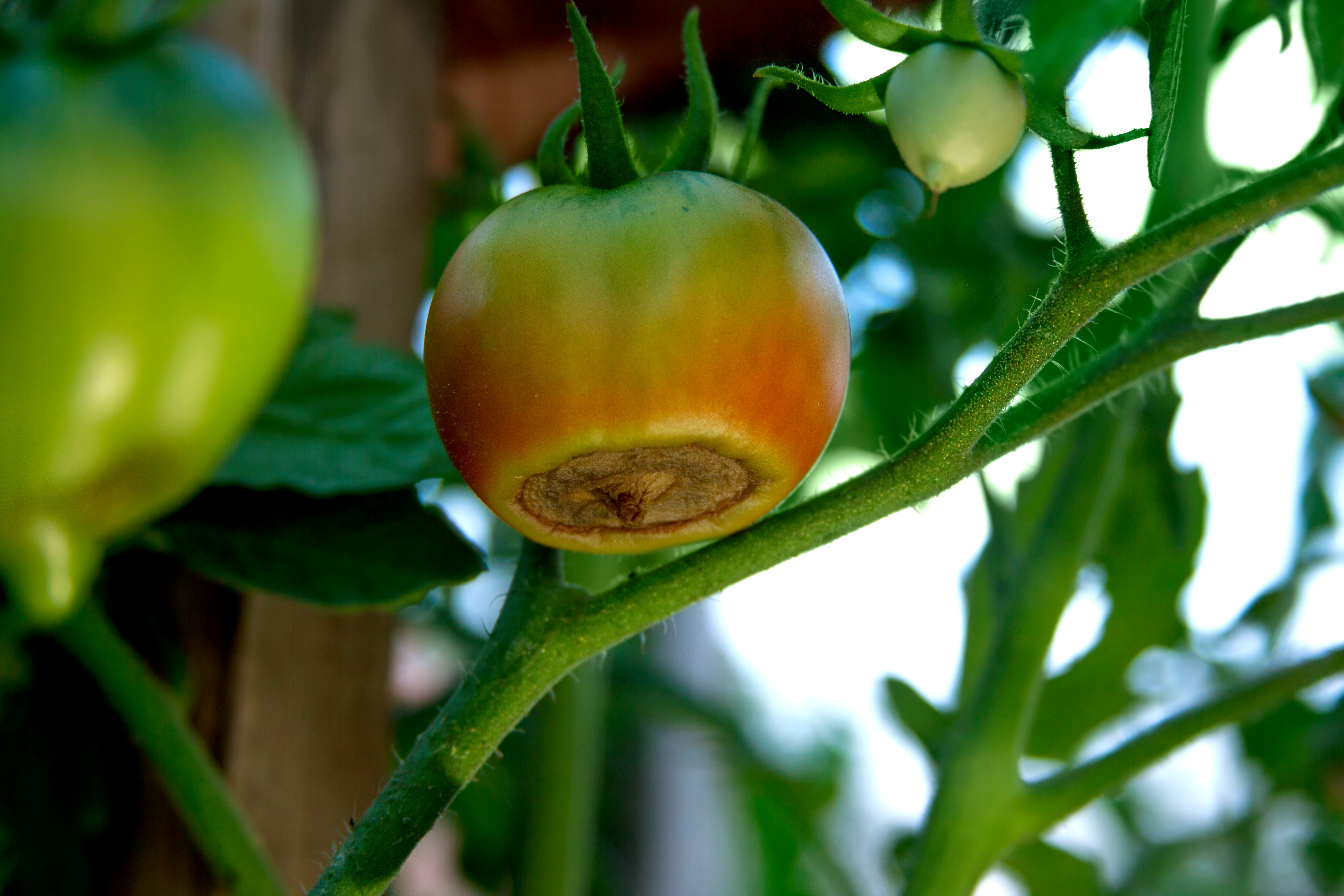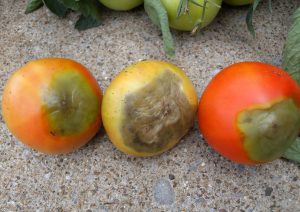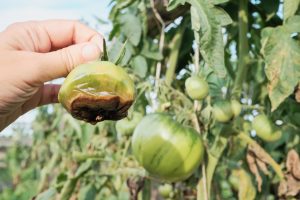
A promising start, until blossom-end rot strikes. Keep your tomatoes healthy by maintaining consistent watering, balanced fertilization, and proper soil pH. Photo by Mila Makhova, Adobe.
It’s the moment you’ve been waiting for – after weeks of careful tending, the first set of tomatoes is beginning to form. Each day, you check your plants with anticipation, imagining the juicy, homegrown harvest to come. But one morning, while inspecting your developing tomatoes, you notice some have sunken, leathery brown patches at the blossom end. Your excitement turns to frustration – what went wrong?
Blossom-end rot is one of the most frustrating disorders for home gardeners and commercial growers alike. This common issue appears as a sunken, leathery brown or black spot at the blossom end of tomatoes, usually occurring on the first fruits the plant produces. Though it may look like a disease, blossom-end rot is actually a physiological disorder caused by calcium deficiency in the fruit. Understanding what triggers it and how to prevent it can help ensure a healthy tomato harvest.
What Causes Blossom-End Rot?

Blossom-end rot can appear at any stage of ripening. These tomatoes developed severe lesions due to calcium deficiency caused by inconsistent watering. Photo by Brenda Kennedy, University of Kentucky, Bugwood.org.
Although blossom-end rot results from calcium deficiency in the fruit, it is rarely caused by a lack of calcium in the soil. Instead, the issue arises when calcium uptake is disrupted due to fluctuations in soil moisture, root damage, or excessive fertilization.
Calcium moves through plants via active transpiration, traveling with water as it evaporates from above-ground plant parts. Since leaves lose more water through transpiration than fruits, calcium is more likely to accumulate in leaves rather than being directed toward developing tomatoes. This imbalance is made worse by excessive nitrogen fertilization, which encourages leafy growth and further diverts calcium away from the fruit.
The following factors contribute to blossom-end rot:
- Inconsistent Watering. Calcium is transported through water in the plant, so periods of drought followed by excessive moisture can hinder uptake.
- Excess Nitrogen Fertilization. Too much nitrogen, especially in ammonium form, can interfere with calcium absorption and promote excessive foliage growth at the expense of fruit development.
- Soil pH Imbalance. Acidic soils (below pH 5.5) can limit calcium availability to plants.
- Root Damage. Over-cultivation or compacted soils can reduce root function, limiting nutrient uptake.
Prevention Strategies
Blossom-end rot cannot be reversed once it appears, but often the plant will produce healthy fruit as the season progresses. Several cultural practices can help prevent it from occurring in the first place.
- Maintain Consistent Soil Moisture. Water deeply and consistently, adjusting for temperature and weather conditions. As a general rule, tomatoes need about an inch of water per week, with an additional half-inch for every 10-degree increase above 60°F. In hot summer months, when temperatures reach the 80s and 90s, this means tomatoes may require closer to two inches of water per week to maintain adequate soil moisture. Mulching with straw, pine needles, or shredded leaves helps regulate soil moisture and reduce evaporation. It is also important to avoid letting the soil dry out completely between waterings to ensure steady calcium uptake by the plant.
- Test and Amend Soil. Vegetable gardens, especially those rich in compost, often contain adequate amounts of calcium, but its availability depends on factors like soil pH and consistent watering. A soil test can determine if nutrient or pH adjustments are needed. If the soil pH is below 6.0, applying lime can help raise it to the optimal range of 6.0–6.5, improving calcium availability to plants. If a soil test confirms low calcium levels, adding gypsum (calcium sulfate) can provide a supplemental source of calcium without altering soil pH.
- Fertilize Properly. Using a balanced fertilizer with moderate nitrogen is key to preventing blossom-end rot. Avoid high-ammonium formulations, as they can interfere with calcium absorption. Excess fertilization early in the season encourages vigorous leaf growth, diverting calcium away from fruit development and increasing the risk of blossom-end rot.
- Choose the Right Tomato Varieties. Cherry and other small-fruited tomato varieties tend to be less prone to blossom-end rot than larger slicing types, making them a good option for gardeners concerned about calcium-related issues.
What to Do If You See Blossom-End Rot
Once symptoms appear, affected fruit will not recover, but the plant can still produce healthy tomatoes with proper care. Remove damaged fruit to encourage new growth and address the underlying moisture and nutrient issues. If watering and fertilization practices are adjusted, subsequent fruits should develop normally.
For more information on identifying blossom-end rot, visit the UF/IFAS Plant Pathology U-scout page: https://plantpath.ifas.ufl.edu/u-scout/tomato/blossom-end-rot.html.
- Cool Season Annual Herbs to Plant in December - December 11, 2025
- The Dirt on Compost: Hot and Worm Composting at Home - October 30, 2025
- Fall Gardening Spotlight: Collard Greens - October 3, 2025

